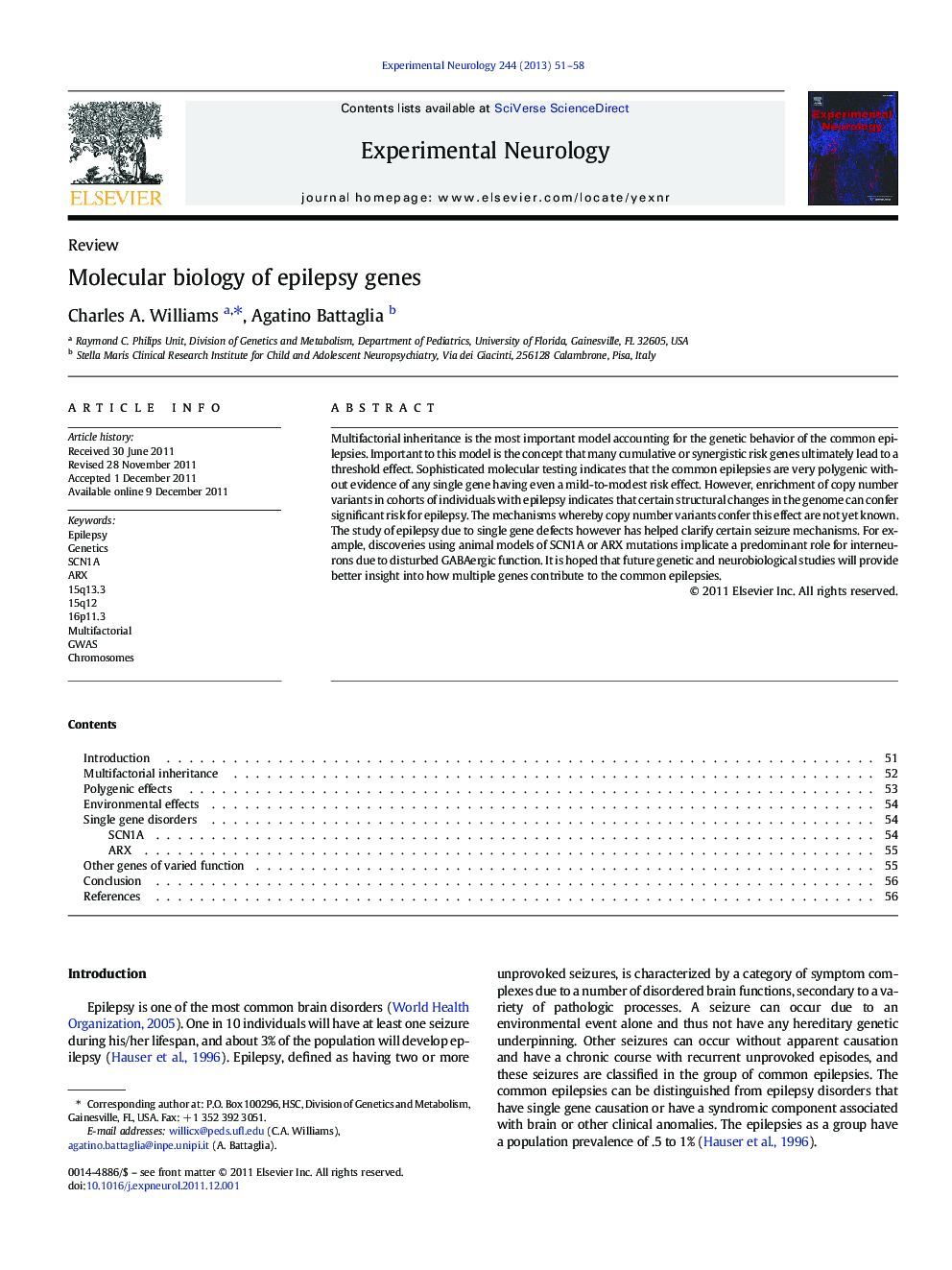| Article ID | Journal | Published Year | Pages | File Type |
|---|---|---|---|---|
| 3055591 | Experimental Neurology | 2013 | 8 Pages |
Multifactorial inheritance is the most important model accounting for the genetic behavior of the common epilepsies. Important to this model is the concept that many cumulative or synergistic risk genes ultimately lead to a threshold effect. Sophisticated molecular testing indicates that the common epilepsies are very polygenic without evidence of any single gene having even a mild-to-modest risk effect. However, enrichment of copy number variants in cohorts of individuals with epilepsy indicates that certain structural changes in the genome can confer significant risk for epilepsy. The mechanisms whereby copy number variants confer this effect are not yet known. The study of epilepsy due to single gene defects however has helped clarify certain seizure mechanisms. For example, discoveries using animal models of SCN1A or ARX mutations implicate a predominant role for interneurons due to disturbed GABAergic function. It is hoped that future genetic and neurobiological studies will provide better insight into how multiple genes contribute to the common epilepsies.
► The genetic landscape of the epilepsies is complex, with varied clinical phenotypes. ► The multifactorial inheritance model best explains the genetic basis of the common epilepsies. ► Multiple genes are implicated in this model but have been difficult to identify. ► Enrichment of certain genomic copy number variants occurs in the common epilepsies. ► Study of animal models implicates a role for interneurons in the genesis of SCN1A and ARX-related epilepsies.
